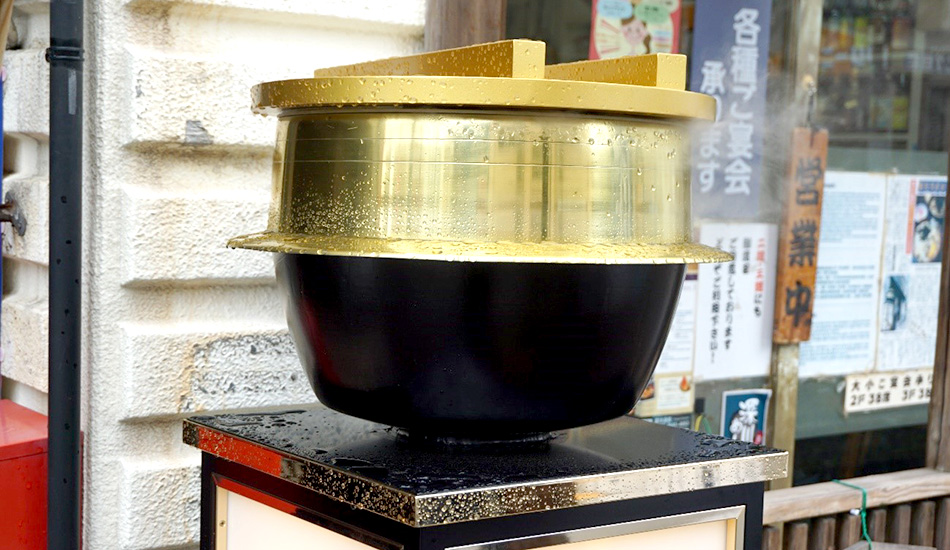“Fukagawa-meshi”, a local dish dating from the Edo era
Published: December 7, 2018
The Kiyosumi-shirakawa area is famous for its beautiful Japanese garden, the fascinating Fukagawa Edo Museum, the old-fashioned shopping street,

and Fukagawa-meshi.
Fukagawa-meshi dates from the Edo period before much of the land in the area was reclaimed. At that time local fishermen used to fish the shallow waters nearby. To sustain themselves they would eat a breakfast of hot boiled rice, followed by cold rice for lunch, and the evening meal. This staple diet would be livened up by the addition of asari (short-necked clams) and finely chopped green onions. It was from this humble beginning that today’s Fukagawa-meshi was born.
One of the places where you can eat this local dish is Fukagawa Kamasho. Run by Mr. Ikehata, the restaurant has stood on Shiryokan-dori Street for 20 years, and you can’t miss it: just look for the steaming traditional rice cooker placed on a stand outside.
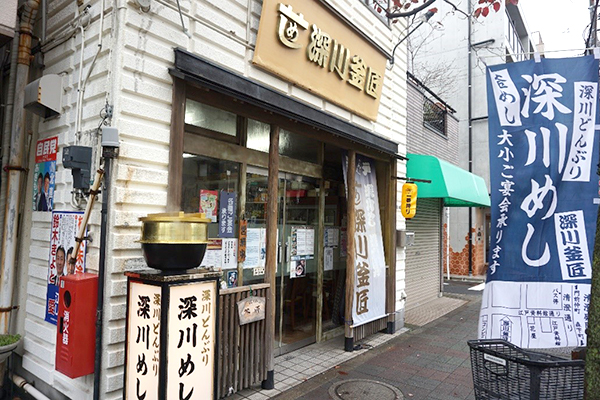
Sliding open the restaurant’s door, my wife and I stepped into a crowded small eating area set with tables and chairs, but Mr. Ikehata waved us up a steep flight of stairs to the second floor of this three-storey building, where we were told to make ourselves comfortable in a pleasant tatami room.
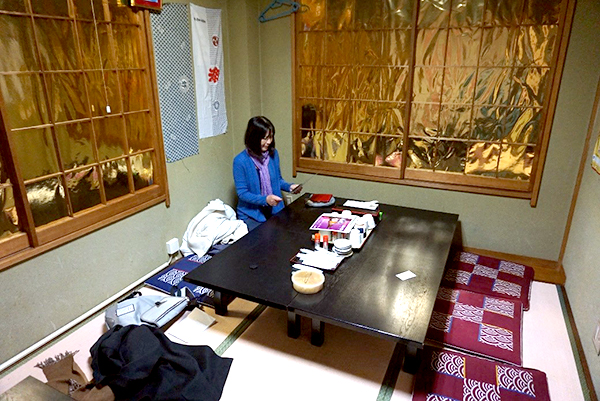
The other part of the second floor was occupied by a group of diners already tucking into their Fukagawa-meshi and obviously enjoying it.
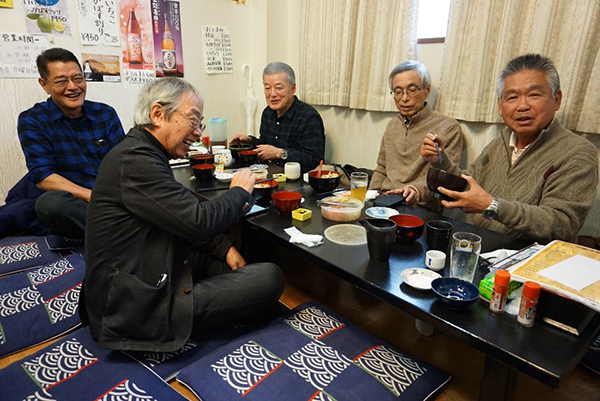
Fukagawa Kamasho originally offered a broad range of meals, but gradually the list was refined to four dishes: Fukagawa-meshi, Fukagawa-donburi, Fukagawa Combo and Kiyosumi Combo. The former two consist of a main dish accompanied by traditional side plates, whilst the latter two comprise set courses targeted at group tours and diners with time to spare and very large appetites!
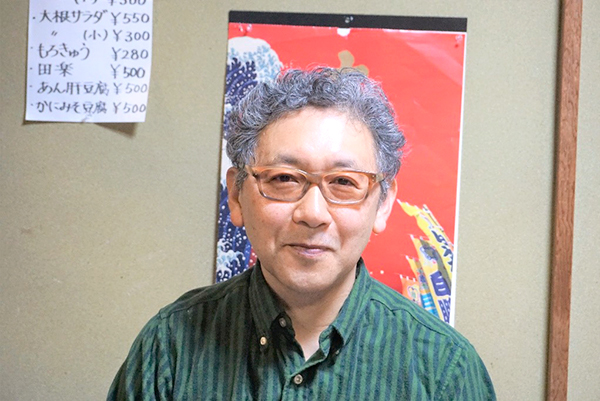
Mr. Ikehata reckons that non-Japanese customers make up around 30% of his clientele, many of whom, to his surprise, have discovered Fukagawa Kamasho through internet comments by satisfied customers. To cater to these, Mr. Ikehata has produced a menu in English, Chinese and Korean, as well as Japanese.
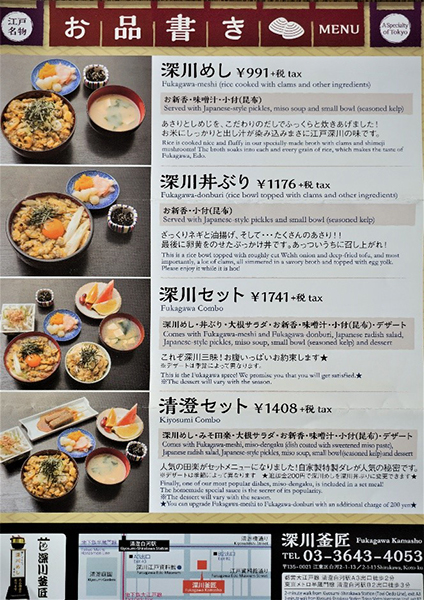
Focusing on serving up a few select dishes enables Mr. Ikehata and his staff to do what they do well. And it seems to work; we were given Fukagawa-meshi and Fukagawa-donburi to try, and before I go any further let me warn you, besides these being very tasty meals, they are also very filling. So much so, that placed on each table is a tube of cling film wrap to enable customers to take home the Fukagawa-meshi left-overs (the Fukagawa-donburi is a soup-type dish which unfortunately makes it impractical to wrap).
What can I say about the Fukagawa-donburi? The bowl comes teeming with rice in a hot savoury soup, mixed with deep-fried tofu and a smidgen of miso. It is piled high with asari, peering above the soup, and is topped off with the yolk of an egg and sprinkled with dried seaweed.
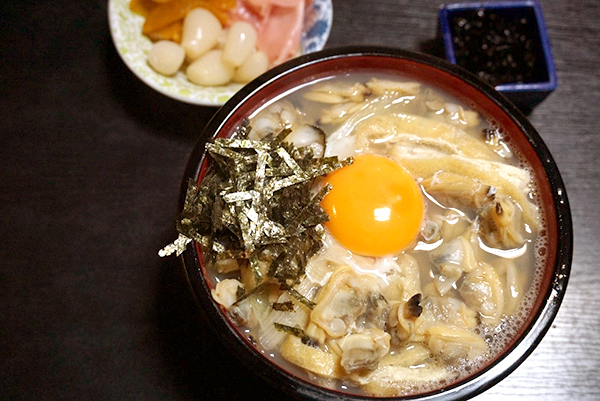
We helped ourselves to sweetened pickled ginger, spring onions and pickled daikon (Japanese radish), all of which I found moreish. The whole result was a delicious and warming meal; just right for a cold and damp December day.
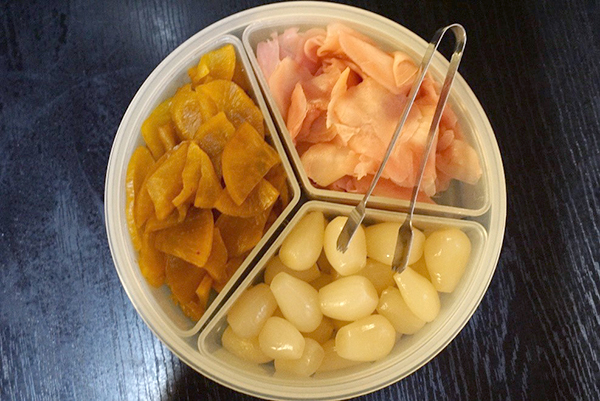
We then attempted to do justice to the Fukagawa-meshi. This bowl contained a mound of cooked rice flavoured with katsuo (bonito) and mirin (sweet cooking sake) and mixed with Japanese mushrooms. There is no attempt to cut down on the asari, which were piled high. The dish was capped with finely chopped onions and a sprinkling of dried seaweed.
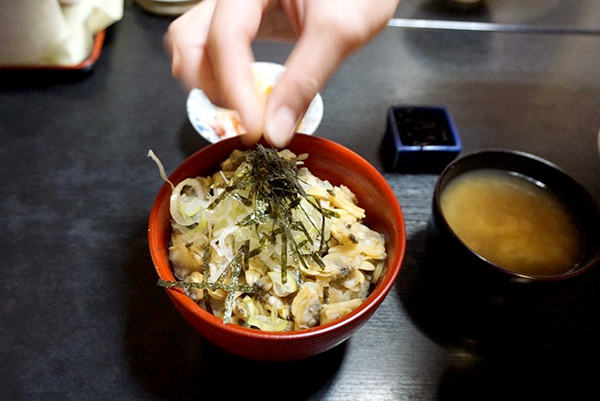
The Fukagawa-meshi came with a side bowl of miso soup, which was full of tofu and seaweed. Again, we helped ourselves to the sweet pickled ginger, spring onions and daikon.
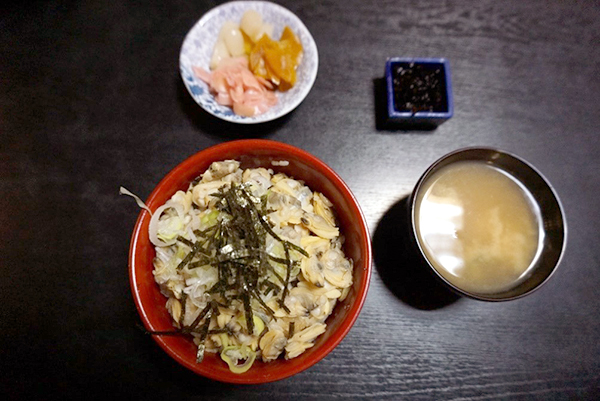
Already feeling satisfyingly bloated we were given another house speciality to sample: miso-dengaku, a block of konyaku (the charmingly-named devil’s tongue) coated in a delicious thick sweetened-miso paste. It is this paste which gives this unusual but popular Japanese side dish its flavour.
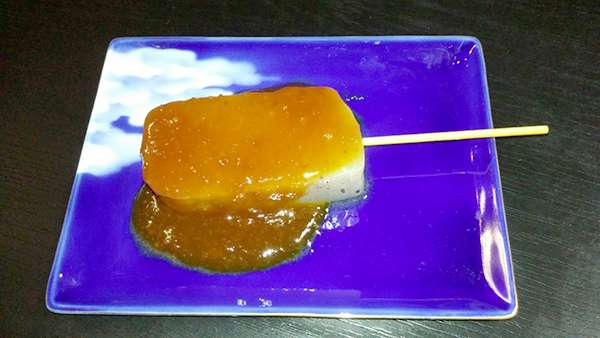
We tried valiantly to finish all the food, but finally we had to resort to the cling film wrap for the Fukagawa-meshi.
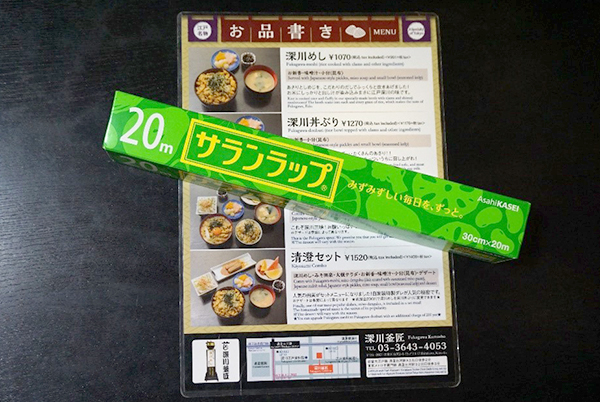
Given the volume of rice and asari, Fukagawa Kamasho staff are very understanding and are happy to take an order for two persons to share one meal – something we will do next time.
Story and photographs by Jeremy Hutchinson

